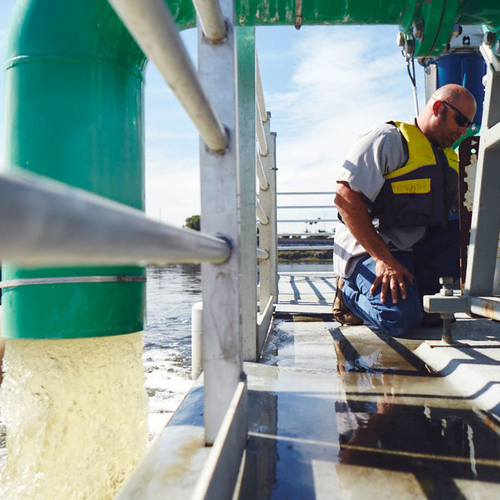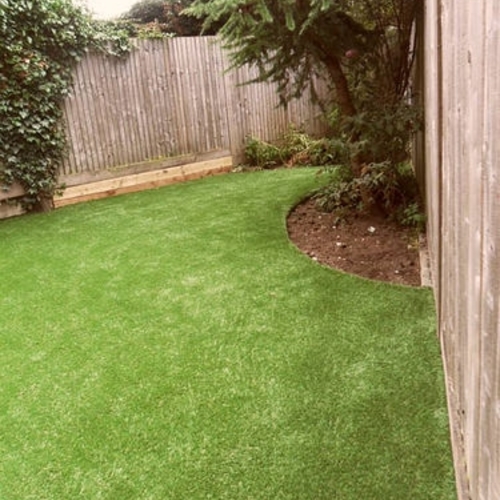
Image Credit: Wikimedia Commons
By now, most everyone in the country has heard at least something about California’s serious water shortage: the snow pack is paper thin, reservoirs are way down, and the governor has ordered a 25 percent cut in consumption.
But in an article published on April 5, 2015, The Los Angeles Times finds that the drought hasn’t put much of a dent in water consumption in wealthier communities, and some residents of these communities may not understand the depth of the problem.
In upscale communities such as La Cañada Flintridge, Newport Beach, and Malibu, daily per capita consumption topped 150 gallons in January, while in Santa Ana it was just 38 gallons a day, the newspaper reported.
In Los Angeles, where daily water use was 70 gallons per person, a UCLA study found that over a 10-year period, wealthy neighborhoods used three times as much water as everyone else.
“The problem lies, in part, in the social isolation of the rich, the moral isolation of the rich,” Stephanie Pincetl, who worked on the study, told the newspaper. Wealthy people, she added, are “lacking a sense that we are all in this together.”
Communities increase the pressure for conservation
In the wake of Gov. Jerry Brown’s announcement, officials in Beverly Hills said they would introduce stricter controls on water, and some residents interviewed by the newspaper had devised their own ways of cutting back. One 76-year-old woman, for example, said she used the cold water running as the shower heated up to water her plants. When there were no guests in the house, she added, she didn’t always flush the toilet.
Some residents were replacing real turf with artificial grass, as one of the governor’s recommendations had suggested, and practices such as watering roadside vegetation were curtailed.
One 53-year-old Newport Beach resident was caught by a neighbor watering a small strip of grass in front of his house. Reported to the local water board, the man was embarrassed and angry, but he’s now following the situation more closely and said he would take out the grass if things don’t improve.
National Public Radio reports that water smart meters have been useful in tracking down flagrant water use. In Long Beach, a McDonald’s restaurant paid the first city fine — $800 — after city workers alerted by meter readings videotaped sprinklers running in the middle of the night.
But there will be challenges, too. A man interviewed at a sidewalk cafe in Beverly Hills said he’s not using as much water to brush his teeth as he used to, but he still had to consider his spa tub and his lemon and orange trees.
“This is America,” he told the newspaper. “You gotta live it up a little bit, right?”
The governor’s orders don’t apply to agriculture, which uses 80 percent of the state’s water, The Indepedent reported. California produces nearly half the fruit, vegetables, and nuts in the country, the report says, and farmers have already taken a $1.5 billion hit from the drought. Some 500,000 acres of agricultural land has gone fallow.
Weekly Newsletter
Get building science and energy efficiency advice, plus special offers, in your inbox.















6 Comments
Is going green only for the rich?
A good sister article would be about if the green movement is primarily for the rich? It is only the rich who can afford electric cars subsided in part by the taxed wages of the working poor. The greenest houses built in the area where I live are by far the largest and most expensive homes that can only be afforded by the very wealthy. Most LEED building are built by public entities with public money paid with tax increases on those who are least able to afford them. Now the county where I live will even let those wealthy enough to build green jump to the front of the line in the permitting process and give them discounts on their permits. In the process the working class that can't afford to go green subsidize those who can through higher permit costs and longer permit times.
If the elected officials really cared about the poor being able to afford water wouldn't they work at increasing the supply to stabilize the cost instead of raising the rates? Haven't they been neglecting to increase the storage capacity even while the population has increased? There are reports that about 40% of the water in California just runs out to the ocean instead of being captured and used.
The green movement is the class issue here. All the regulations and laws being forced on us is impacting the working poor more than any one. For the rich being green is more of a status symbol than anything else.
What was once expensive...
...becomes cheap after the rich have been buying in volume (with or without subsidies.) India isn't complaining about the price of photovoltaics, (much), that never would have hit their current (and falling) price points without subsidies in to the rich in first-world countries.
The unsubsidized lifecycle cost of rooftop PV will be under the residential retail price in most of the US by 2020. But since the upfront cost is substantial, there are some class distinctions, but those are being eroded by creative business models. Leasing & power-purchase agreements with third party ownership of the PV can get those short of wallet with reasonable credit into $0 or $-low rooftop PV. Yeloha's business model doesn't even require good credit, only the clear legal right to install it on your roof, essentially renting 70% of the roof space for the array to Yeloha (who sets up power purchase agreements with other residential customers) in exchange for 30% of the output of the array for the roof-owner, who can even have TERRIBLE credit problems. See: http://www.yeloha.com/
A Nissan Leave has an MSRP of ~$29KUSD, which is hardly a price point only for the rich, and after the US tax subsidy it's in the same or lower price range as a Totota Camry, a fairly middle-income kind of ride, not a luxury-mobile. The Chevy Spark EV is cheaper still, (but SFAIK only available in CA & Korea.) It's not ALL about Model-S & i3.
So, no, it's not only for the rich, even if the rich get to be at the head of the line (which is true for most things.)
The primary storage capacity in California has been the high elevation snowpack, and will be for the forseeable future. You can build all of the reservoirs you want to retain the runoff, but if there is no runoff, there's nothing to capture & retain. There is no credible means of increasing the supply, which is the (mostly frozen) precipitation that falls at altitude. The runoff that "...just runs out into the ocean..." is supporting vital ecosystems in this mostly desert arid/semi-arid type climate (drier than Mediterratnean or middle eastern climates.)
Response to Dan Vandermolen
Dan,
No, green building is not just for the rich. The greenest homes in the world -- those with the lowest environmental impact -- are the homes built by the rural poor in the world's poorest countries.
There are more zero-energy homes in Africa than on any other continent.
In the U.S., however, the pursuit of homes with a green certification -- something that is not the same as a green home -- is often the province of the rich.
For more information on this topic, see Who Deserves the Prize for the Greenest Home in the U.S.?
Water bills
I'm interested in seeing the city I live in encourage water conservation by providing a water bill that includes information on how much water was used in the prior months similar to what is done on gas and electric bills in our area. So instead of just the current billing cycle it would include the prior five cycles. Our electric and gas bill currently show thirteen months of usage. The electric company goes a step further and sends a report that compares your home to 100 homes of similar size and the most efficient neighbors. It will also inform you what percentage increase or decrease in electricity you have compared to the prior year.
I think a similar approach on water bills would help encourage conservation. Right now the water rates are increasing so rapidly you can't just compare how much your bill is to get an idea if one is using more or less water.
Does anyone live where they provide a detailed water bill that provides current water usage and past usage for a 12 month period? I'm looking for an example water bill to present to our city council.
Water Consumption as a class act
Scott Gibson's article is spot on and demonstrates why pricing alone won't solve California's drought induced water problems. A simpler more egalitarian solution, a solution that will result in significant water savings, is to simply prohibit turf (lawn) irrigation. Note I mention turf irrigation intending that water should be reserved for trees and shrubs using appropriate arid irrigation methods. Simply put (and as highlighted in previous GreenBuildingAdvisor articles) turf (lawns) has no place in the desert, and most of California is desert. When faced with a similar situation, Australian government and water agencies implemented a "no irrigated turf policy" in response to a historic drought. Of course there was lots of grumbling, but by and large Australians complied with the restriction and learned to life without lawns (keep in mind that Aussies being mostly English immigrants really loved their lawns). Moreover, the rich have, in general, really big lawns (why wouldn't they? they think they're aristocrats and live in mansions!) and can afford to keep them green, regardless of price (they also are profligate energy users) because price doesn't matter to them. Having just returned from a trip to the Santa Barbara area I saw that without a turf irrigation prohibition the rich continued to keep their lawns green regardless of cost. They paid the price either through higher rates or digging deeper or more wells. It's time we get serious about domestic water use in California and prohibit turf irrigation.
Agricultural use
As the majority of water use in California is for agriculture how much of an impact does residential water use conservation really have? "Approximately nine million acres of farmland in California are irrigated, representing roughly 80% of all human water use." http://www.ppic.org/main/publication_show.asp?i=1108
Log in or create an account to post a comment.
Sign up Log in